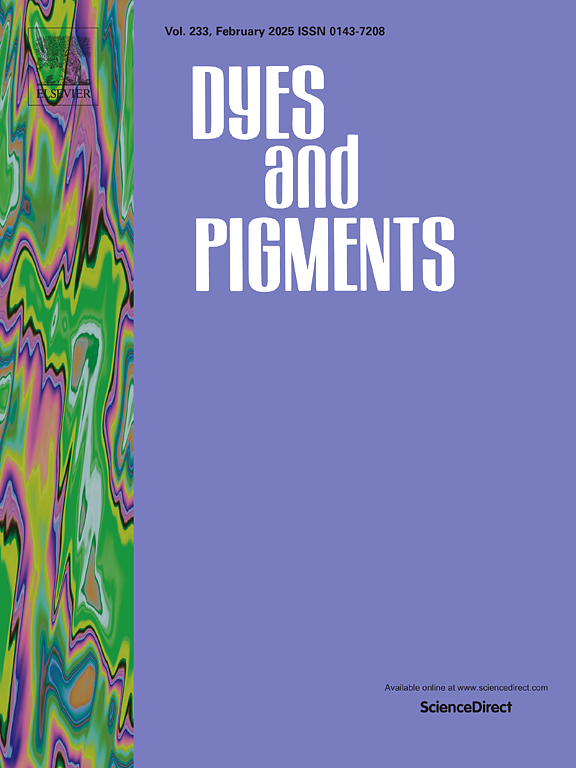One-pot synthesis, photophysical, electrochemical and molecular property of mixed-ligands ruthenium complex functionalities: Potential materials for dye-sensitized solar cells (DSSCs)
IF 4.1
3区 工程技术
Q2 CHEMISTRY, APPLIED
引用次数: 0
Abstract
In our search for excellent photoactive materials for optolectronic applications such as dye-sensitized solar cells, four highly emissive, new fluorescent ruthenium coordinated dye complexes (A-D) having pyridyl-3,5-dicarboxylic acid and triphenylphosphine as the two common monodentate ligands formulated as RuCl2(PPh3)2(dca)2, RuCl2(PPh3)Bpy(dca), RuCl2(PPh3)Hbpy(dca) and RuCl2(PPh3)Phen(dca) were prepared in a one-pot synthetic method, purified and characterized by IR, UV–Vis, PL, 1H, 13C, 31P- NMR spectroscopy, elemental analysis, electrochemistry and mass spectrometry. The UV–Vis absorption spectra revealed three to four well-define absorption peaks in the region λmax 265–560 nm which were assigned to the π–π∗ transitions, two ligand-to-ligand charge-transfer (LLCT) bands and dπ(Ru)–π∗(L) transitions respectively. High intensity and broad emissive photoluminescent properties in the mid-infrared region λem (>640 nm) were recorded for all complexes. The electron-donating and/or electron-withdrawing ability of the carboxylic acid and chloride groups present in the complexes possibly favoured a one-electron oxidation reaction, stability of Ru3+/Ru2+ redox properties and the potential of their applications in dye-sensitized solar cells and/or optoelectronics. The calculated results suggest that the frontiers Molecular Orbitals (FMOs), open-circuit voltage (), light-harvesting efficiency (), driving force for electron injection (), dye driving force regeneration (), molecular electrostatic potential (MESP), and density of states () are affected by substituents groups introduced in the ruthenium complex. The of all the dyes are theoretically calculated at JSC 9, 12, and 15 mA cm−2 to give the higher power conversion efficiency () of the solar cell obtained for dye B at (9.36 %). The comparative investigation shows that extended π-spacer variation in the ligands is essential in the fine-tuning of the overall performance of the DSSCs in the ruthenium complexes.

求助全文
约1分钟内获得全文
求助全文
来源期刊

Dyes and Pigments
工程技术-材料科学:纺织
CiteScore
8.20
自引率
13.30%
发文量
933
审稿时长
33 days
期刊介绍:
Dyes and Pigments covers the scientific and technical aspects of the chemistry and physics of dyes, pigments and their intermediates. Emphasis is placed on the properties of the colouring matters themselves rather than on their applications or the system in which they may be applied.
Thus the journal accepts research and review papers on the synthesis of dyes, pigments and intermediates, their physical or chemical properties, e.g. spectroscopic, surface, solution or solid state characteristics, the physical aspects of their preparation, e.g. precipitation, nucleation and growth, crystal formation, liquid crystalline characteristics, their photochemical, ecological or biological properties and the relationship between colour and chemical constitution. However, papers are considered which deal with the more fundamental aspects of colourant application and of the interactions of colourants with substrates or media.
The journal will interest a wide variety of workers in a range of disciplines whose work involves dyes, pigments and their intermediates, and provides a platform for investigators with common interests but diverse fields of activity such as cosmetics, reprographics, dye and pigment synthesis, medical research, polymers, etc.
 求助内容:
求助内容: 应助结果提醒方式:
应助结果提醒方式:


